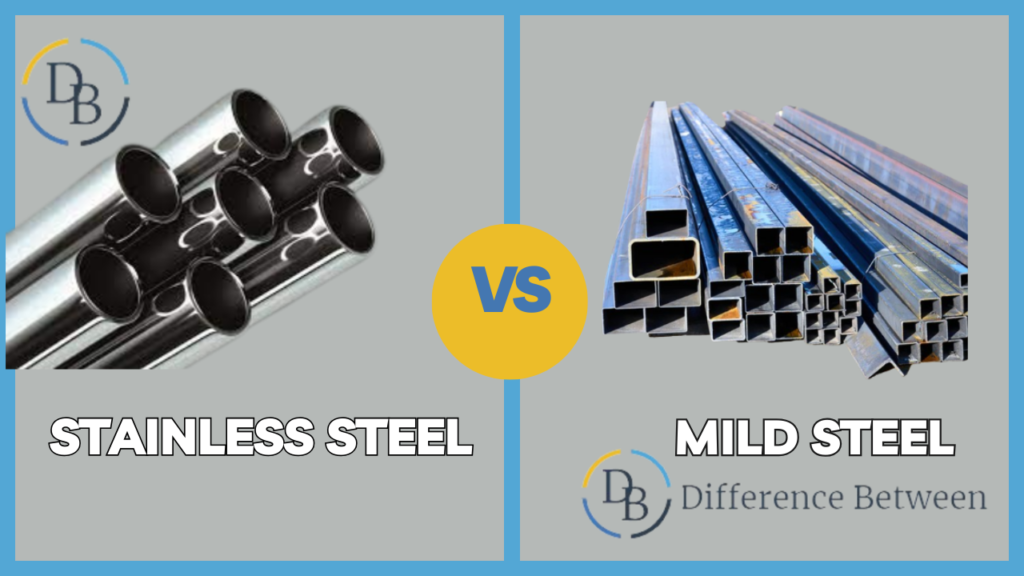In the world of metallurgy, two stalwarts stand out – Stainless Steel and Mild Steel. These alloys are cornerstones of construction, manufacturing, and various industries. This article delves into the characteristics, applications, and key distinctions between Stainless Steel and Mild Steel.
What is Stainless Steel?
Stainless Steel is an alloy of iron, chromium, nickel, and other elements. The inclusion of chromium provides corrosion resistance, making it highly durable.
- Resistant to corrosion, staining, and rust.
- High tensile strength.
- Excellent heat resistance.
- Aesthetic appeal with a shiny finish.
- Used in kitchen appliances, cutlery, medical instruments, and architectural structures.
- Commonly employed in environments prone to corrosion, such as marine applications.

What is Mild Steel?
Mild Steel, also known as low carbon steel, is primarily composed of iron and carbon. It has a low carbon content, typically less than 0.3%.
- Ductile and malleable.
- Lower tensile strength compared to Stainless Steel.
- Prone to corrosion without proper protection.
- Versatile and easily weldable.
3. Applications:
- Widely used in construction, automotive manufacturing, and general engineering.
- Ideal for structural components and machinery due to its affordability and workability.
Difference Between Stainless Steel and Mild Steel:
1. Corrosion Resistance:
- Stainless Steel: Highly resistant to corrosion and rust.
- Mild Steel: Prone to corrosion, requiring protective coatings.
2. Tensile Strength:
- Stainless Steel: Higher tensile strength, suitable for applications demanding robustness.
- Mild Steel: Lower tensile strength but still adequate for many structural purposes.
3. Appearance:
- Stainless Steel: Exhibits a polished and shiny surface, contributing to aesthetic appeal.
- Mild Steel: Has a duller appearance, often requiring surface treatments for enhanced aesthetics.
4. Cost:
- Stainless Steel: Generally more expensive due to its alloy composition.
- Mild Steel: Cost-effective and widely used in budget-sensitive projects.
Comparison Table: Stainless Steel vs. Mild Steel
| Criteria | Stainless Steel | Mild Steel |
|---|---|---|
| Composition | Iron, chromium, nickel, and more. | Iron and low carbon content. |
| Corrosion Resistance | Highly resistant to corrosion. | Prone to corrosion without protection. |
| Tensile Strength | Higher tensile strength. | Lower tensile strength but suitable for many applications. |
| Appearance | Polished and shiny surface. | Duller appearance, may require surface treatments. |
| Cost | Generally more expensive. | Cost-effective and widely used. |
Conclusion
In the realm of metals, Stainless Steel and Mild Steel each bring their own set of strengths and applications to the table. While Stainless Steel shines with its corrosion resistance and aesthetic appeal, Mild Steel stands sturdy as a cost-effective and versatile option. Choosing between them ultimately depends on the specific requirements of a project, highlighting the importance of understanding the nuances that differentiate these two remarkable alloys.

